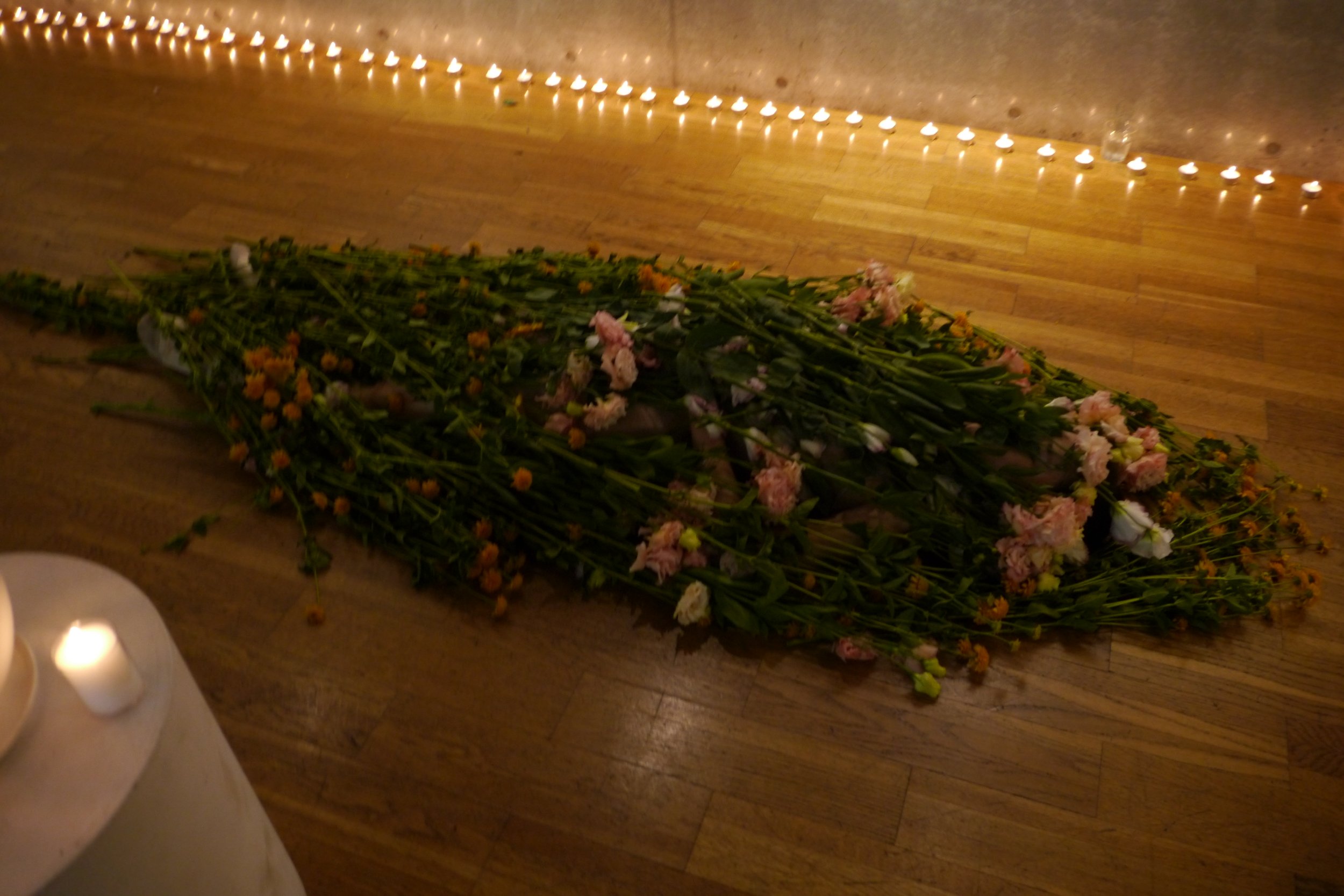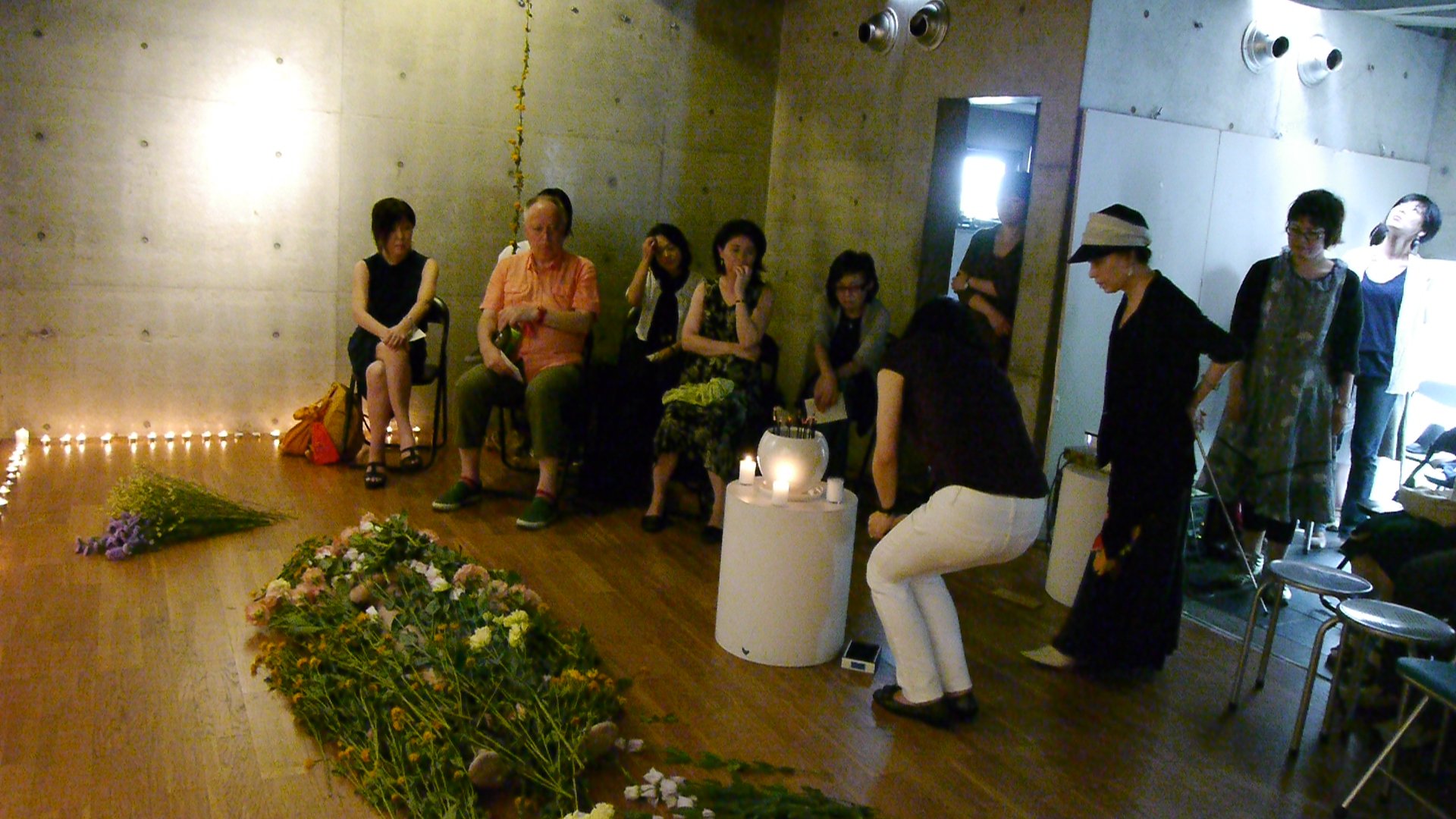Heaven’s Gate
Installation, Performance, 2014
Gallery Brocken, Tokyo, 2014
Busan Biennial, 2014
Curated by Juno Seo
Heaven’s Gate was inspired from the Buddhist idea of “Sari” which is small crystals sometimes found among cremated remains of high monks, and regarded as sacred relics. Although ordinary people would be cremated, only ashes of the bones would be remained, there is a saying that if spiritually high monk would be cremated, small crystal would be remained among the ashes. I have an installation project plan in relation to “Sari”.
I’m interested in exploring how different culture and society has various way of mourning dead. I’m interested in resurrecting indigenous function of ritual in the community and society through my art practice. Modernized society often lost communal ritual yet it was replaced with some sort of festivals or ceremonies. It has become less spiritual and more secular. It is festive and superficial. There seems like much similarity in it yet it is too shallow and commercial to create deep communion among those who participated in it.
According to Jean Baudrillard, a key element of the revolution of modernity is how it transforms our relation to the dead. The dead in traditional societies are not only revered as ancestors but also held up as role models, as ideals for the living to follow. But modern people consider themselves free, and want to be themselves. They reject the ideals of the past, or the claims of the dead, because they think it will force them to become someone other than who they are. But the modern idea of freedom defines freedom as empty, so most people end up in a vicious circle where they want to be themselves, but have no idea of what it means to be one's self.
I attempt to reintroduce an indigenous function of ritual for death through my art practice with contemporary interpretation.
Many of my past works are related to the subject of mourning anonymous death produced in Korea for a past century, beginning with Japanese colonialism, Korean War, and sub sequential division of the country because of ideological split.
Since the Korean War has not ended officially, which lead the Korea to be remained as two separated countries. The truth fact finding of millions of civilian massacre was not fully revealed yet. Many dead spirits were not properly mourned publicly as well as privately. There are many taboos in relation to the massacre because of the regime policy using state violence through both South and North Korean government, prolonged. People were not even allowed to speak about it for a long time until quite recently.
I think those anonymous death unmourned keeps reappearing as a pattern, inducing other sort of tragedy. In North Korea, estimated up to three million people were starved since mid 1990s.
In my recent work, titled “Heaven’s Gate”, I explore a theme on public mourning for the death prohibited to mourn in relation to the death linked to North Korea. Judith Butler stated in her book “Precarious Life” as following;
“If I understand myself on the model of the human, and if the kinds of public grieving that are available to me make clear the norms by which the ‘human’ is constituted for me, then it would seems that I am as much constituted by those I do grieve for as by Those whose death I disavow, whose nameless and faceless death from the melancholic background for my social world, if not my First Worldism. Antigone, risking death herself by burying her brother against the edict of Creon, exemplified the political risks in defying the ban against public grief during times of increased sovereign power and hegemonic national unity.”
In indigenous spiritual philosophy, if a person died unwillingly with violence, and if there would be no proper ritual for mourning to send them to after life plane, the spirit would turn to be a bad spirit and would harass those who are living. Thus, if there would be a natural disaster or accident and many people would be dead, indigenous cultures would hold massive ritual to console dead spirit as well as to offer for God.
This is one of the ways in which indigenous culture handle death, yet even in civilized cultures, the funeral would be taken place for the dead spirits. However there seems to be critical difference between indigenous ritual and commemorative ceremony of the civilized cultures.
Invitation letters were handed out to the audience :
Invitation
I want to invite you to unconditional prayer with us for lost lives, during and after the war.
May we pray together.
May we send love and light equally for those who killed and were killed,
for those who injured and were injured.
I want to invite you to dedicate flowers with us.
I want to light incense together.
<Synopsis of the video piece>
During Japanese colonialism, many Koreans immigrated to Japan. They were living in severe poverty. Discrimination against Koreans was almost unbearable to many, since 1959, they started to immigrate to North Korea. They are called “returnees” as they are considered to be returning to their mother country. However, many of them were from the Southern part of Korea and they immigrated to an unfamiliar territory. Total over 90,000 “returners” immigrated to North Korea and the immigration plan were ended in 1984. After a while, many ofthe “returnees” were executed, sent to concentration camps. Many died. In recent years, some “returners” escaped North Korea and immigrated to China, South Korea, and Japan. The artist was born in Japan as a third-generation Korean and moved to South Korea from Japan in 2011. She met some of the “returners” residing in South Korea and heard stories of their lives. Her great-grandfather was one of the “returners” and immigrated to North Korea and died.
In the video, her conversation with “returners” is shared with the images of the ocean.


























